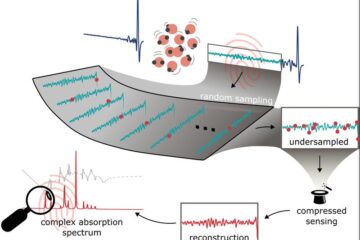Latest News

Disease-causing genetic mutations in sperm increase with men’s age
There’s a lot said about a woman’s ticking biological clock, but male biology doesn’t age as gracefully as men might like to think.
By analyzing sperm from men of various ages, scientists from the McKusick-Nathans Institute for Genetic Medicine at Johns Hopkins have discovered that older men’s sperm is more likely to contain disease-causing genetic mutations that also seem to increase a sperm’s chances of fertilizing an egg.
The findings, which appear in t

Field Museum archaeologists discover tomb under Zapotec residential complex in Oaxaca, Mexico
On a high hilltop terrace in Oaxaca, Mexico, a team of Field Museum archaeologists discovered a 1,500-year-old underground tomb while excavating a palace-like residence. Although it was near the end of their excavation season, they dared not leave the tomb unexplored. News of this find at El Palmillo was sure to get around, and looting would follow. As it was, workers had to guard the tomb every night until the tomb was excavated.
Images of the stone-lined interior – snapped with a digital c

Study examines limited-field radiation for early breast cancer
Data from a five-year study suggests that limited-field radiation therapy (radiation directed at the tumor site) may be as effective as whole-breast radiation therapy in preventing breast cancer recurrence in women treated with breast-conserving surgery. The study appears in the August 20 issue of the Journal of the National Cancer Institute.
Whole-breast radiation therapy is part of standard treatment for women with early-stage breast cancer who have undergone breast-conserving surgery. Ho

Borneo elephants: A high priority for conservation
A new study settles a long-standing dispute about the genesis of an endangered species. With scant fossil evidence supporting a prehistoric presence, scientists could not say for sure where Borneo’s elephants came from. Did they descend from ancient prototypes of the Pleistocene era or from modern relatives introduced just 300–500 years ago? That question, as Fernando et al. report in an article that will appear in the inaugural issue of PLoS Biology (and currently available online at http://bio

Production of plant proteins of biopharmaceutical interest
The advantages of production in plants
According to Navarre Public University lecturer, Angel Mingo, this novel system of protein production is highly advantageous, not only due to its reduced costs with respect to cell cultures in bioreactors, but also because the method is free of the health risks associated with animal cell culture.
Moreover, the technology involved is easily accessible and enables targeting the accumulation of protein to specific compartments and organs

Leading bacterial pathogen is sequenced, providing hope for new defenses in plant and possibly human disease
The complete genome sequence of a leading bacterial plant pathogen offers new ways to stave off agricultural loss and perhaps foil animal or human infection, says a Cornell University researcher.
According to Alan Collmer, Cornell professor of plant pathology, the sequencing (that is, determining the base sequence of each of the ordered DNA fragments in the genome) could help farmers repress tomato speck and other plant diseases. Medical researchers could be aided in comparing a related b











